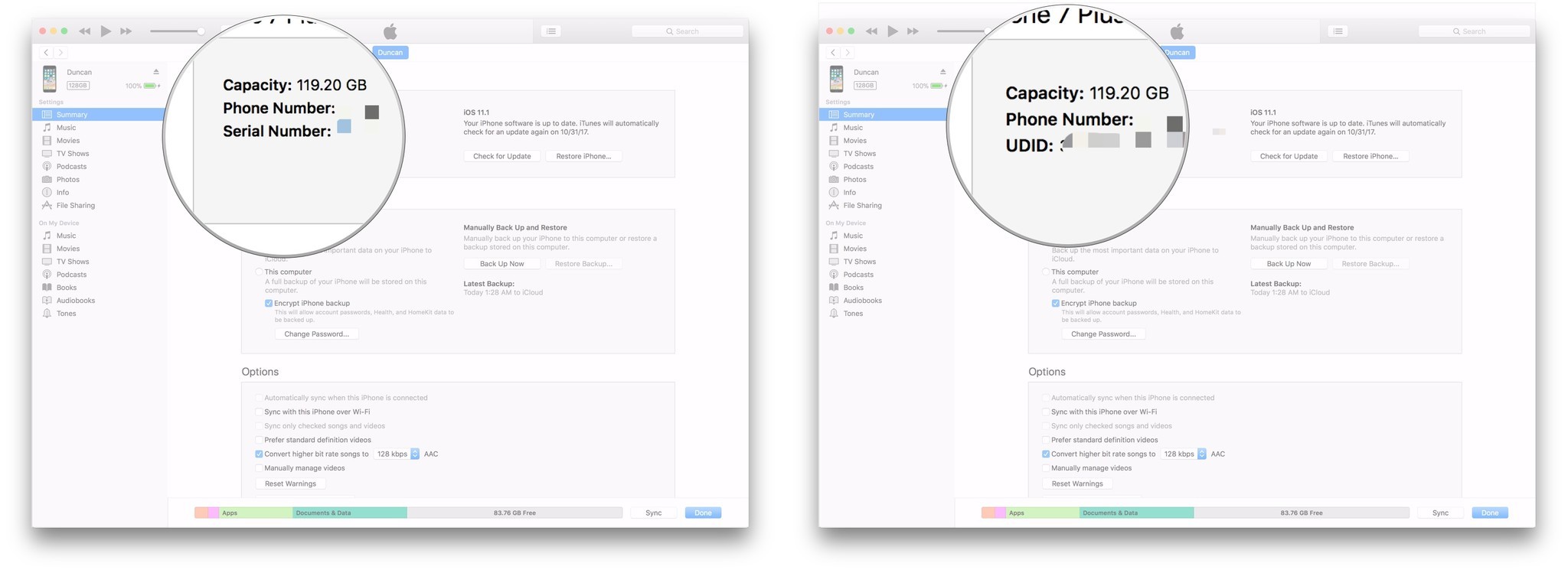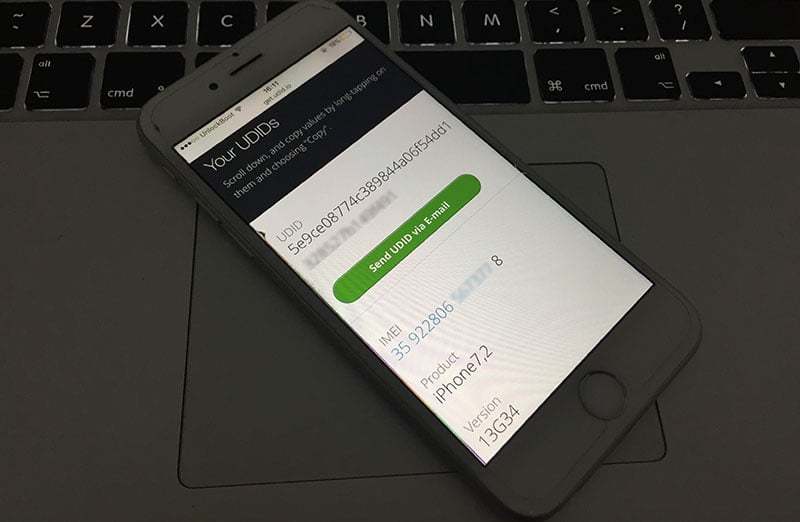UDID Calculator This app displays device information including Serial Number, IMEI, ECID, Bluetooth and WiFi addresses. It also displays the result of a UDID calculation and shows the algorithm used. Finally it shows if the calculated UDID matches the one obtained from the SDK UIDevice uniqueIdentifier method. How to find your UDID Serial number ECID IMEI ICCD on all iPhones: http://myicloud.info/htt.
What is it the UDID?
The UDID (Unique Data Item Description) it is a unique device number assigned to every iOS device such as iPhone, iPod, iPad. The UDID is 40-characters long and it is made up of both numbers and letters.
Here you can see the example of the mentioned number f05c690ac130d030f9191062798963c2dd1f264d
Why do you need to know your UDID Code?
The UDID is required to use the Apple iOS Developer Program, and thus to unlock installation of the test releases iOS'a (all Beta versions). This acronym holds the information about Find My iPhone activation status.
How to an active installation of Beta version on your device?
You need to register your UDID on the Registered Developers Account. You can do it from one of the internet services.
How is the UDID calculate?
If you are interested in the process of generating the UDID number you can read equations the below and their explanations:
The newer version of iOS (iPhone 4 and all newer devices)
- Equation: UDID = SHA1(serial + ECID + wifiMac + bluetoothMac)
- Explanations:
- serial = 12-character long serial number. You can read this number from Settings or iTunes.
- ECID = 13-character long Electronic Chip ID is an identifier unique to every unit. It’s important to use this code in decimal without leading zeroes.
- wifiMac = 17-character long Wi-Fi MAC address.
- bluetooth Mac = 17-character long Bluetooth MAC address
The older version of iOS:

- Equation: UDID = SHA1(serial + ECID + wifiMac + bluetoothMac)
- Explanations:
- serial = 11-character long serial number. You can read this number from Settings or iTunes.
- IMEI number = International Mobile Equipment Identity is a unique number. You may find out the method of checking this number on our tutorials for example: Youtube Video
- wifiMac = 17-character long Wi-Fi MAC address.
- bluetooth Mac = 17-character long Bluetooth MAC address
The string created by the following receipt is converted by the SHA1 Hash Algorithm
How to check UDID on your device?
- At the very beginning connect your device to PC by using Apple USB Cable.
- Afterwards, open iTunes on your computer and choose the iPhone icon.
- In the next step you have click on the Serial Number.
- Excellent! The UDID appears on the screen.
- You can right click in order to copy the following number.
UDID - all you need to know
Rating: 1.0 - 1 reviewsArticles
Articles
Related questions:
UDID - all you need to know
Check other APPLE device solutions:
A UDID (Unique Device Identifier) is a calculated string that is used to identify a device for the purposes of app installation, registration, and MDM enrollment.
For developers building extensions for jailbroken iOS: it's not recommended to calculate the UDID yourself - instead, use libMobileGestalt.dylib, as described on the iPhoneDevWiki.
- 1Calculation
- 1.22007-August 2018
Calculation

There are two different formats of UDID, depending on the device.
September 2018-present
With the release of Apple Watch Series 4, iPhone XR, iPhone XS and iPhone XS Max, the UDID format changed. All devices released after these use the new format:
- 8 characters of ChipID padded with zeros on the left, without leading zeros. e.g.
8020for iPhone XS. - A hyphen, followed by 16 characters of ECID in hexadecimal padded with zeros on left
The general format will be:
Example:
Serial Number Idm
2007-August 2018
For devices released before September 2018 (Apple TV 4K and earlier, Apple Watch Series 3 and earlier, iPad (6th generation) and earlier, iPad mini 4 and earlier, iPhone X and earlier, and iPod touch (6th generation) and earlier), the method to calculate is the following:
- Get the 11- or 12-character long serial number (exactly like it is written in the Settings app)
- On iPhone 4 and newer, get the ECID in decimal, no leading zeroes. On earlier devices, get the IMEI number (without spaces, empty string for iPod touch and Wi-Fi model iPads)
- Get the Wi-Fi MAC address (letters in lower case, including colons); for the iPod touch first generation use '00:00:00:00:00:00'
- Get the Bluetooth MAC address (letters in lower case, including colons)
- Calculate a SHA1 hash of these.
The basic formula for this is below:
On the Verizon iPhone 4 up to iPhone X (inclusive):
Prior devices:
Changing UDID
This form of UDID can be changed by running the command below, followed by a DFU restore. If the DFU restore is not performed, many applications will break, including iTunes. It is very important to first write down the original MAC address and keep that information in a safe place so that you can revert this change if necessary. This hack is shown on an iPod touch (4th generation).


It is also very important to not change this to an invalid MAC address. If you change your device's MAC address to something invalid, your internet won't work again until you fix the MAC address (using MobileTerminal or similar). This persists even if you restore -- so you can make this really really hard to fix (you can call it a form of bricking) if you restore and there's no jailbreak available, if the available jailbreaks don't include afc2 and other workarounds aren't working.
Note that changing your UDID can have weird side effects in general, including that you'll have to log in again to everything, including Apple apps.
If you're still willing to risk this, this is the command: